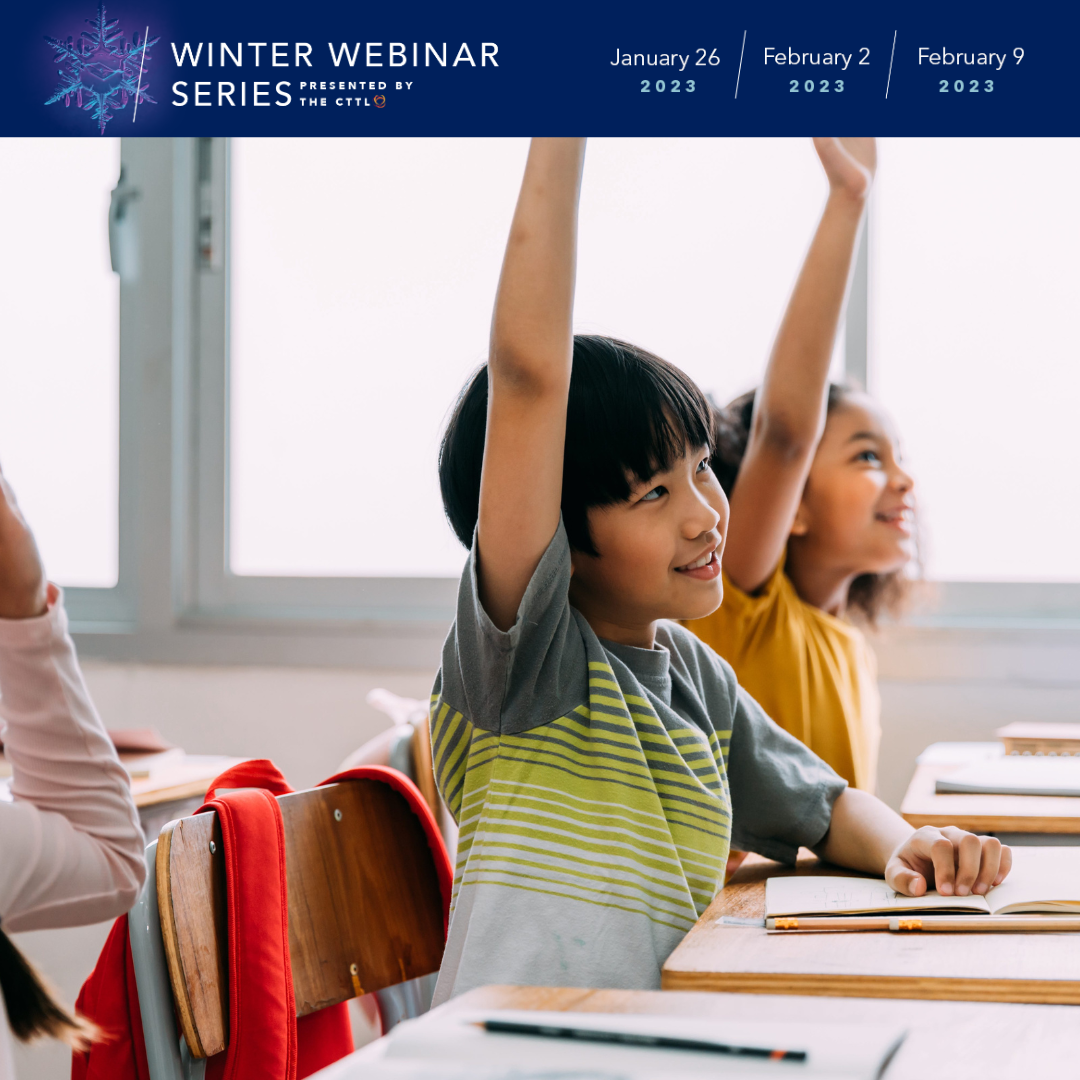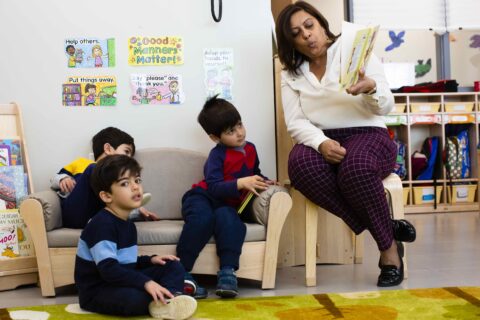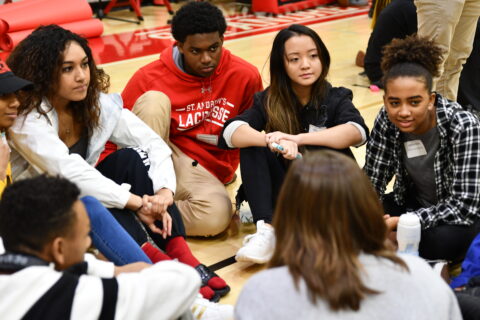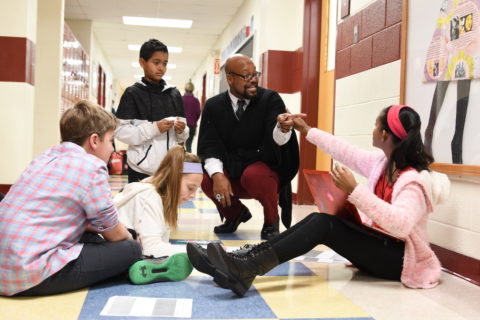By Lorraine Martinez Hanley and Eva Shultis
We each tend to interpret through our respective lenses of Diversity, Equity, and Belonging (DEB) and Mind, Brain & Education (MBE) Science. When we sit together and share perspectives, we each learn something new and notice points of connection. In academia and teacher professional development, the fields of DEB and MBE are siloed and distinct, but in the daily experience of students in a school, they are inextricably intertwined. These bodies of knowledge can also offer teachers and school leaders research and strategies to better understand and support all students.
As we sit in the Center for Transformative Teaching and Learning (CTTL) looking out the glass walls into our school’s Student Center, it offers a window into our students’ sense of belonging (1). We see them studying during free periods, coming and going between classes and sports. We see who is here early in the morning or waiting for the late bus home, where different groups tend to congregate, who is in a group, and who sits by themselves. Your office may not be made of glass like ours, but every school has at least one hub spot like this. Where is that spot on your campus? And what do you observe when you sit there?
Thinking about our students’ developing social and academic identities through the lenses of MBE and DEB led us to create the braid in the figure below. It is a visual analogy to help us consider all the strands of who our students are as learners and as people, and to recognize that these components are both related and distinct. For example, I suspect we all know a student who has a strong sense of social belonging and feels unsure about whether they belong in our class or school academically. If that student is talking with friends during class rather than focusing on an academic task, it may be helpful to understand that they are turning toward the social realm because they feel a greater sense of belonging there. Other students may have exactly the opposite experience. Every student feels academic and social belonging to varying degrees, and MBE and DEB can help us bolster both.
Next to each strand of the braid below, there’s an empty box for you to fill in. We invite you to print the page so you can write on it. What are some components of your students’ developing social identities? What are some components of their developing academic identities?

In our minds, social identity includes the core eight social identifiers (2) and more: interests and extracurricular activities (athletics, arts, clubs), political affiliation, the neighborhood students live in, and the languages they speak, to name a few. But, when do we stop to consider, for example, how body image impacts the way students navigate classrooms and hallways, how they see themselves, and how the world sees them? When we talk about ability, it is important to remember we are not just talking about physical ability but also mental, emotional, and learning ability. Neurodiversity spans the social and academic realms. Academic identity includes and is shaped by interests and motivation, course placements, learning differences, executive functioning and metacognitive skills, learning strategies, the feedback students receive, and their resulting sense of self-efficacy. Curriculum and pedagogy have an important role in both strands as they build academic skills and provide social windows and mirrors for all students.
Students do not check their identities at the front doors of a school. As they move through each day – from one classroom to another; through the hallway; to the cafeteria, bathrooms, and locker room – they are carrying all the aspects of their identities with them and deciding which parts to share and which to conceal, according to the safety and relational trust they feel in each of these spaces. We cannot see everything students are carrying, nor can we fully appreciate the energy and cognitive bandwidth required to calibrate themselves to be able to navigate these different environments. We need to be aware of our assumptions and hold space in our minds for all of the strands students are weaving together.
Personal reflection:
As we grow to understand our own identities and the lived experiences we bring to our classrooms, schools, and other learning environments, we create space to deepen our understanding of our students. That affords us the opportunities to strengthen those relationships. We can also use the braid to reflect on our own identities. What elements contribute to your academic and social identities? And how do these elements of identity impact…
- …your sense of belonging in your school?
- …your relationships with students and colleagues?
- …the content of your curriculum, the manner in which you grade, and your class norms/expectations for behavior?
(1) The definition of belonging we refer to most often comes from Healey & Stroman (2021): “A universal human need that is fundamentally linked to learning and well-being. It describes an individual’s experience of feeling that they are, or are likely to be, accepted and respected as a valued contributor in a specific environment. When students experience a sense of belonging in a learning environment, there are both immediate and long-term positive consequences for their academic performance and well-being.”
(2) Core social identifiers: age, race and ethnicity, family structure, religion/beliefs, gender, socio-economic status, sexuality, ability




